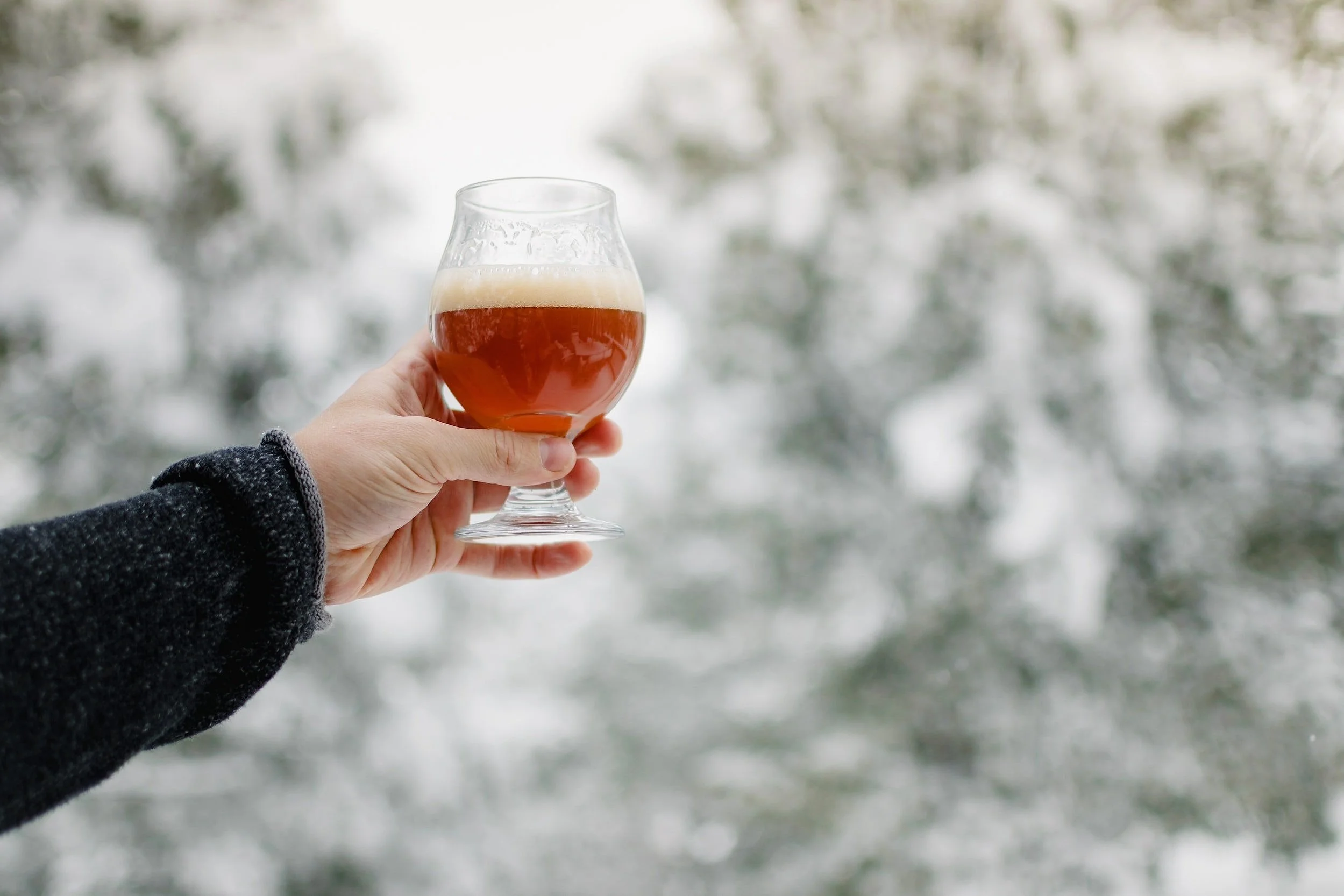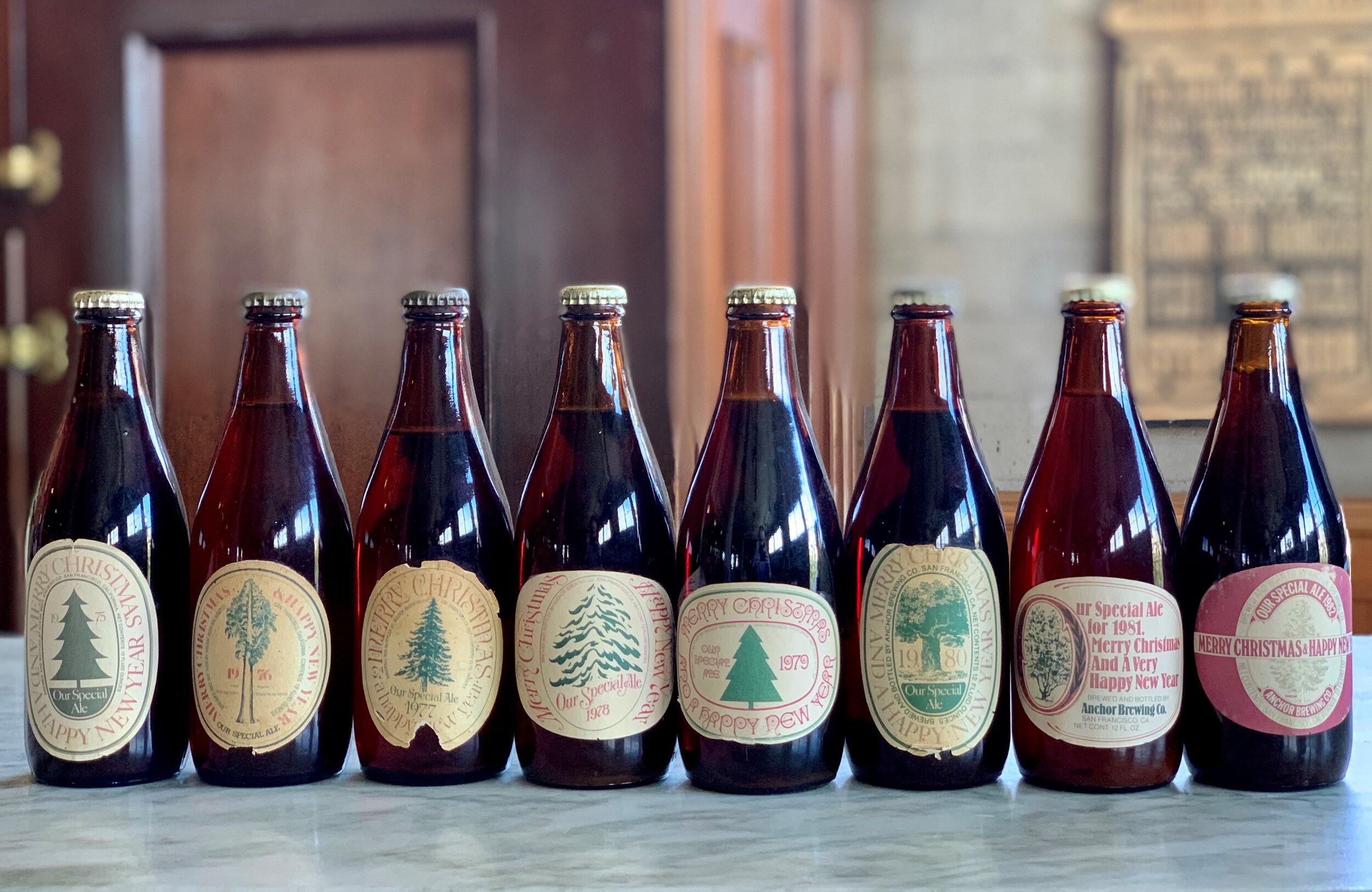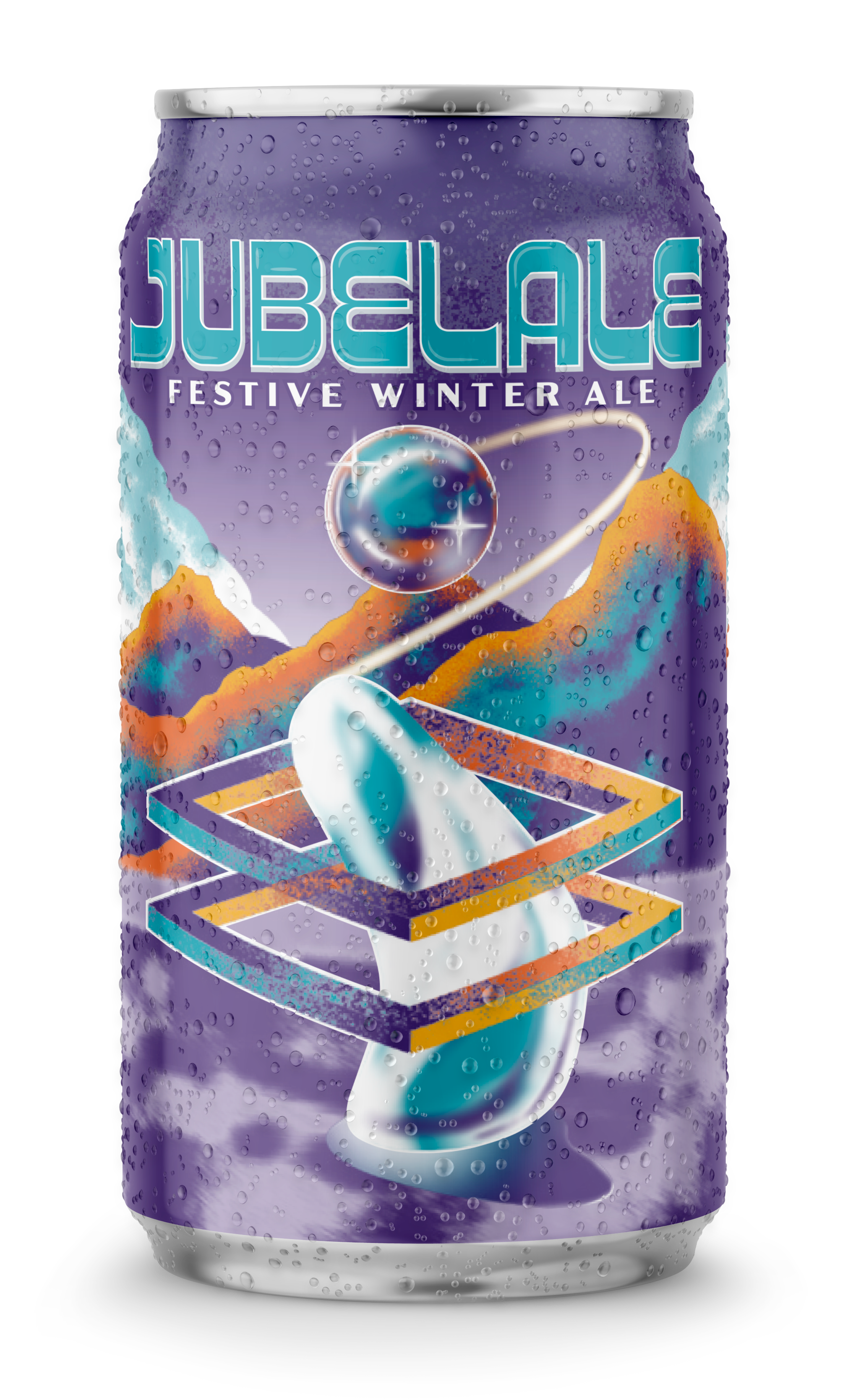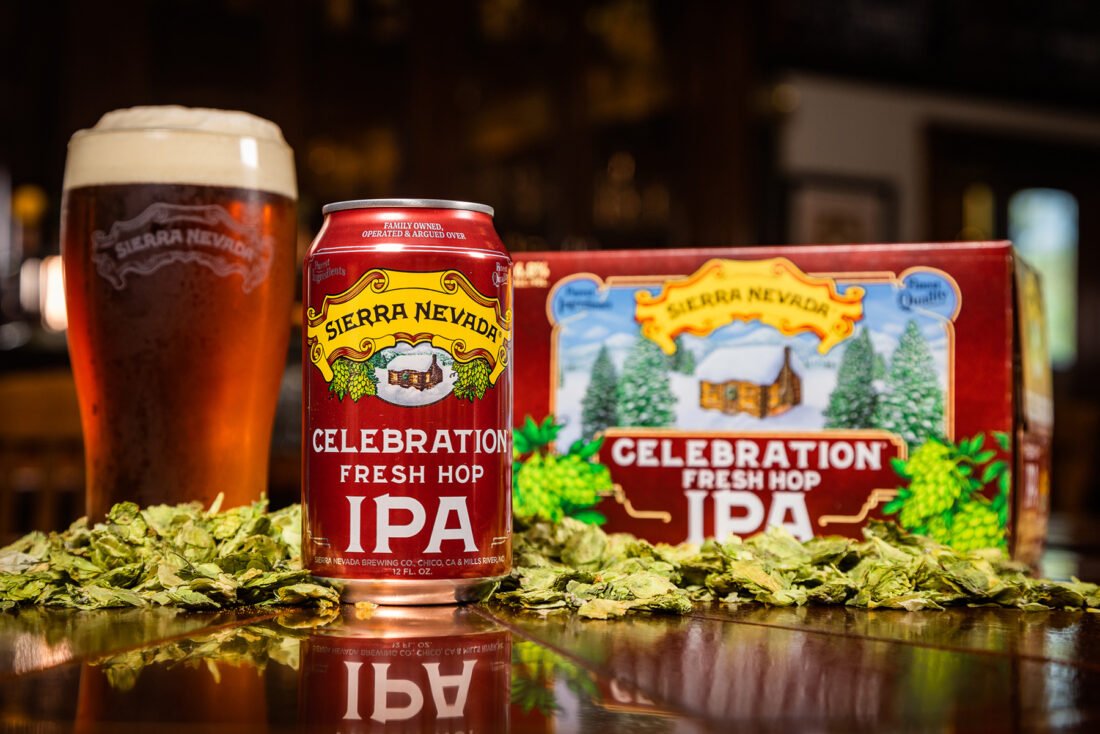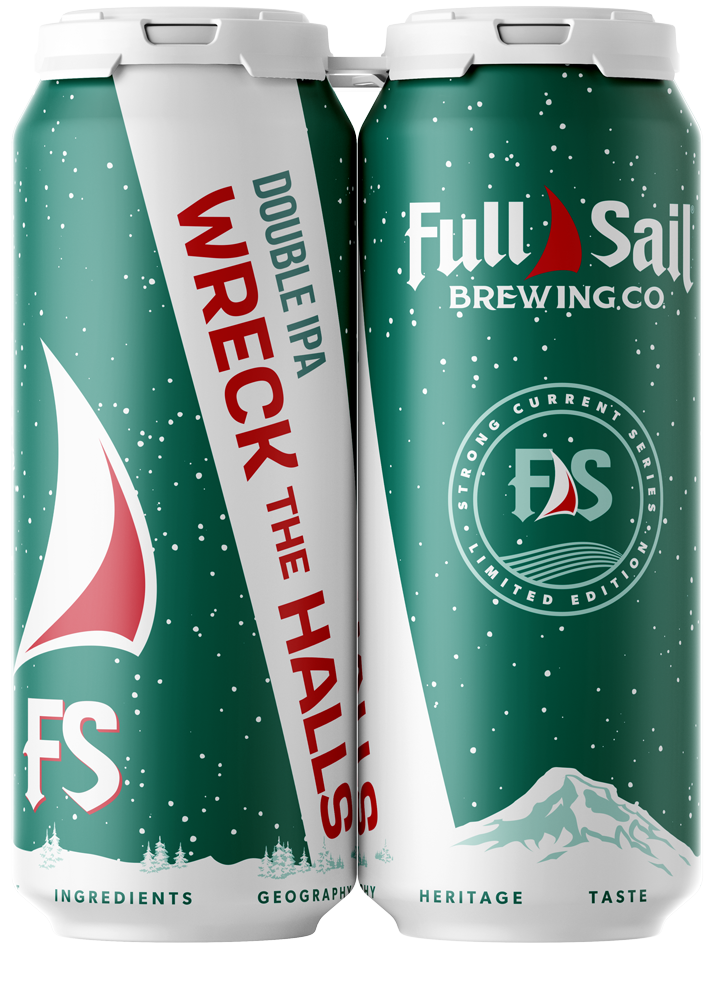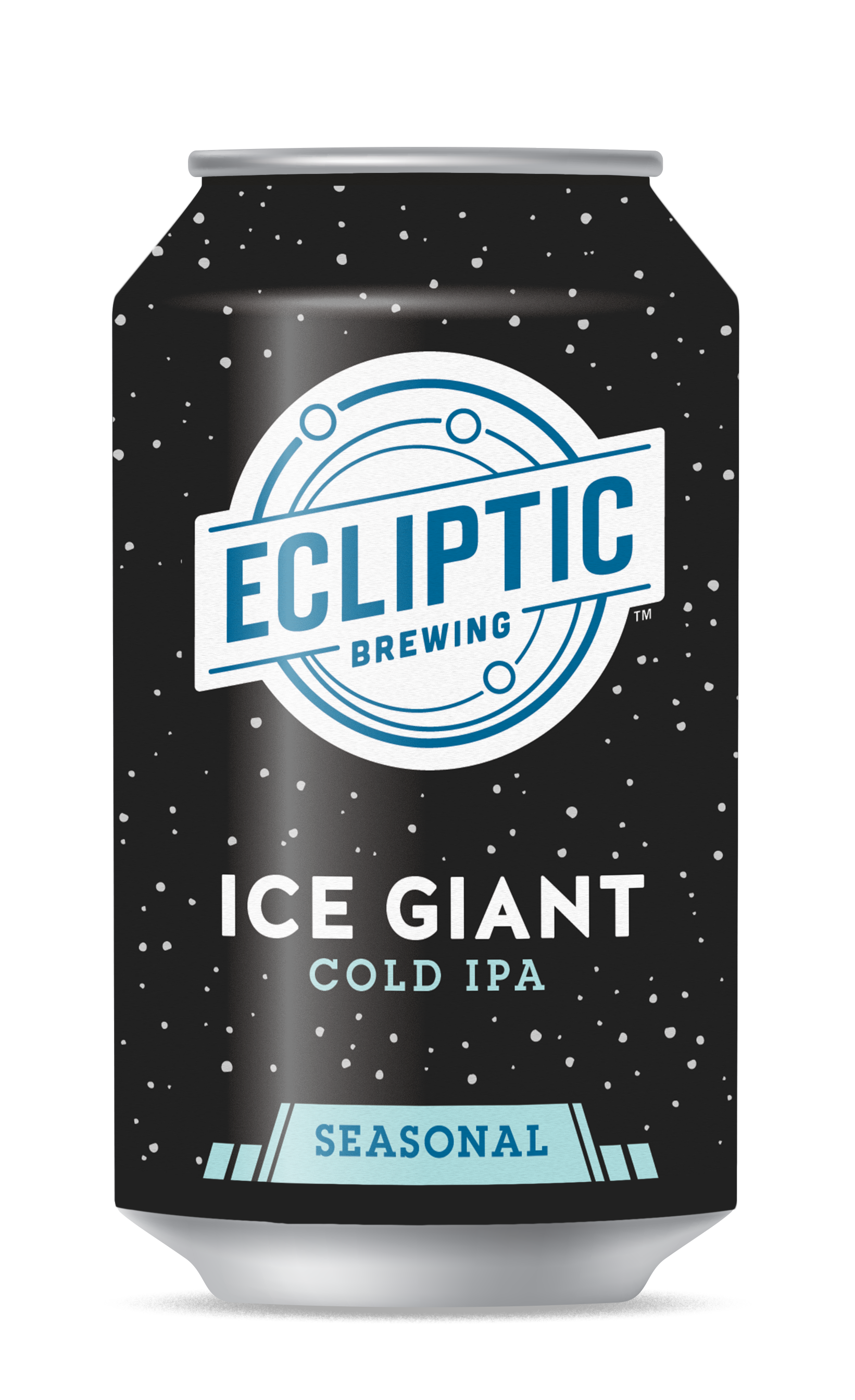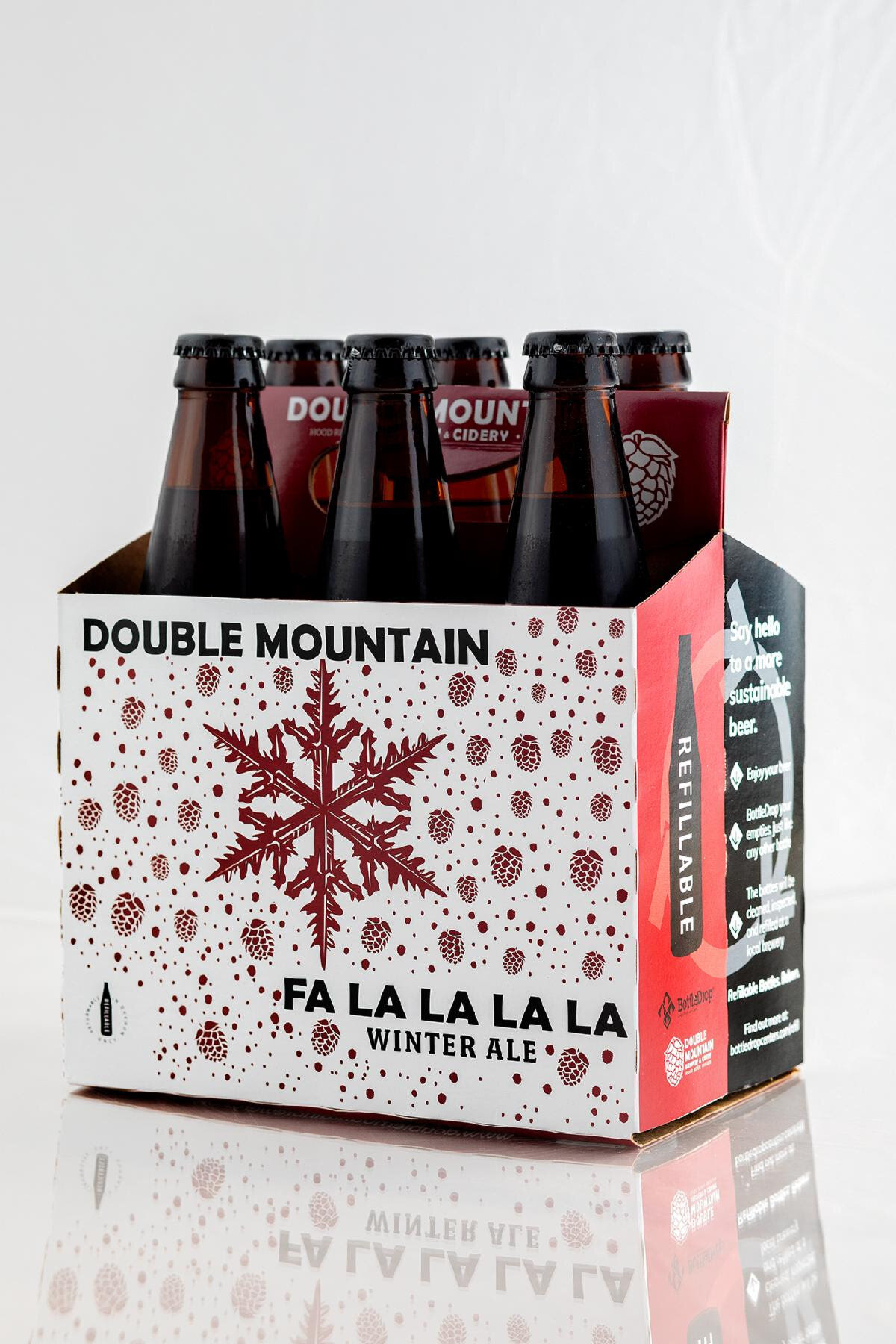A Brief History of Winter Warmers & Holiday Ales of the West Coast
To ward off the seasonal cough, some folks increase their intake of vitamin C. To ward off any seasonal sales slump, craft breweries created the seasonal beer. Often confused for an actual style of beer, the winter ale/holiday seasonal dates back to 1975 but its heritage goes back thousands of years to the first celebratory toast. Winter seasonals are more of a marketing and sales push today than a particular kind of beer, but many of us find the slow turn to the darker and chillier months much more palatable with a special beer in hand.
Winter/holiday ales generally fall into three camps: spiced, malt-driven and hoppy. And all are often delivered stronger than ales from less festive times of the year.
The first American beer brewed specifically for a winter release came from a San Francisco, California brewer. Anchor Brewing Co. introduced Our Special Ale — or OSA — in 1975.
According to the brewery, OSA was the first holiday beer released since Prohibition. Anchor has always tied this beer more to the holidays than the season. It’s one of the few beers to wear Christianity on its sleeve, a tradition the brewery embraced when they renamed their product Christmas Ale.
But as they say, the more Anchor Brewing’s Christmas Ale has changed over the years, the more it’s stayed the same. Since its introduction over 30 years ago, the product’s labels have been drawn by artist Jim Stitt, featuring a different design each year. And as the recipe has remained a dark spiced ale, a closely guarded secret blend of special ingredients is changed every year. With the 2018 release, the brewery has embraced the increasingly popular tradition of saving and cellaring their products. Perhaps with longevity in mind, the 2018 Christmas Ale offers an increased ABV of 6.9 percent, perfect for laying down and remaining stable as it ages.
The first spiced winter ales likely date back to Christianity and the Anglo-Saxon celebration of the new year in the 1300s — a tradition known as wassail. The history of the word denotes a kind of greeting that became associated with drinking and celebration. Versions of wassail were made with wine and cider — a traditional recipe called lamb’s wool (with roasted frothing crab apples) was referenced in Shakespeare’s comedy A Midsummer Night’s Dream. Most commonly, wassail was served in a large bowl with dark ale, fruits and spices. To soak up the grog, fine breads or cakes floated within. This is where the the traditional celebratory toast of “wassail!” originated.
Figgy Pudding is a Brandy barrel-aged English-style old ale brewed with blackstrap molasses, Ceylon cinnamon, nutmeg, and allspice
Spiced
In the Pacific Northwest, we have our own traditions which don’t often involve spicing our beers with anything more than hops. However, a handful of notable brewers carry on the colorful tradition.
Block 15 Brewing in Corvallis makes Figgy Pudding, one of the most limited and sought-after winter warmers in the state. Figgy Pudding was inspired by the sticky 16th century English dessert traditionally made with figs and served at Christmas. Block 15’s liquid version is an English-style stock ale aged in brandy barrels and lightly spiced with Ceylon cinnamon, nutmeg, and allspice. Bottles of Figgy Pudding are hard to find outside of the brewery, but are worth seeking out and even setting down to age at 10 percent ABV.
One of Oregon’s most awarded breweries, pFriem Family Brewers also goes old school with its Belgian Christmas Ale, one of two winter seasonals from the Hood River brewery. Inspired by Belgian beers like St. Bernardus Christmas Ale, pFriem’s rendition is a spiced Belgian-style Dubbel. Definitely a malt- and yeast-driven beer full of toffee flavors and ripe fruits, the brew is heavily spiced with dark Belgian candi sugar and coriander for toffee and caramel flavors and a bright, peppery and citrusy character.
Fort George Brewery’s Magnanimous IPA might be the quintessential Oregon take on the spiced winter warmer. A blend of spiced and hoppy winter ales, Magnanimous is brewed with nearly 500 pounds of hand-picked spruce fir tips. Each year, two shifts of brewers and volunteers visit Tim and Jana Ensign’s Earth & Sky Christmas tree farm in Oregon City to gather enough tips for this annual brew. Spiced beers are a hard sell in Oregon for a mass audience but Magnanimous IPA has earned good reviews and maintained a strong fanbase. Tim Ensign, the brew’s creator, credits the bright flavors to using only grand fir spruce tips, which he says are more aromatic, more oily and add a perceived sweetness. The fresh, cool and spicy herbal quality of spruce mingles with Northwest hops for a truly expressive modern Oregon winter seasonal.
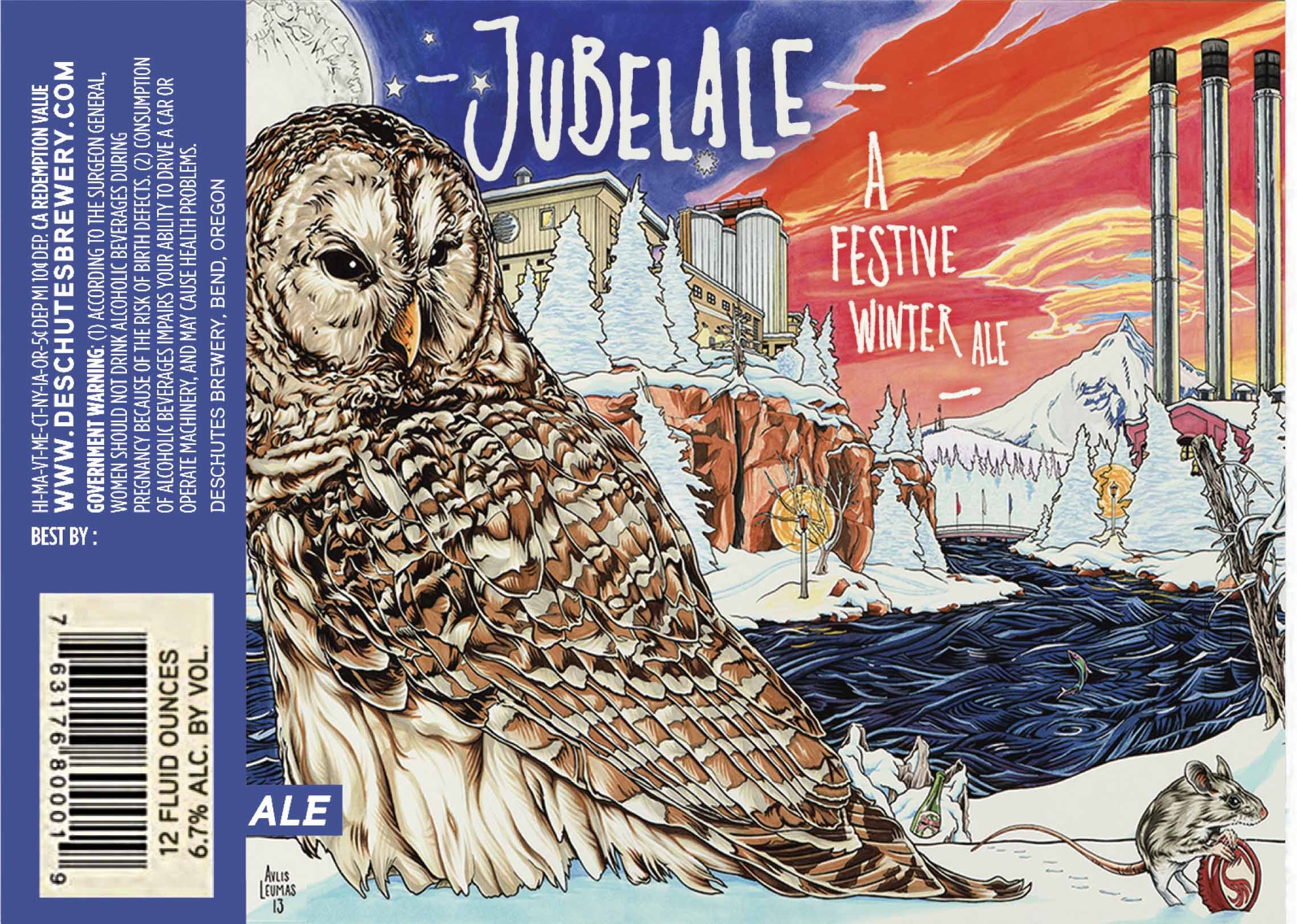
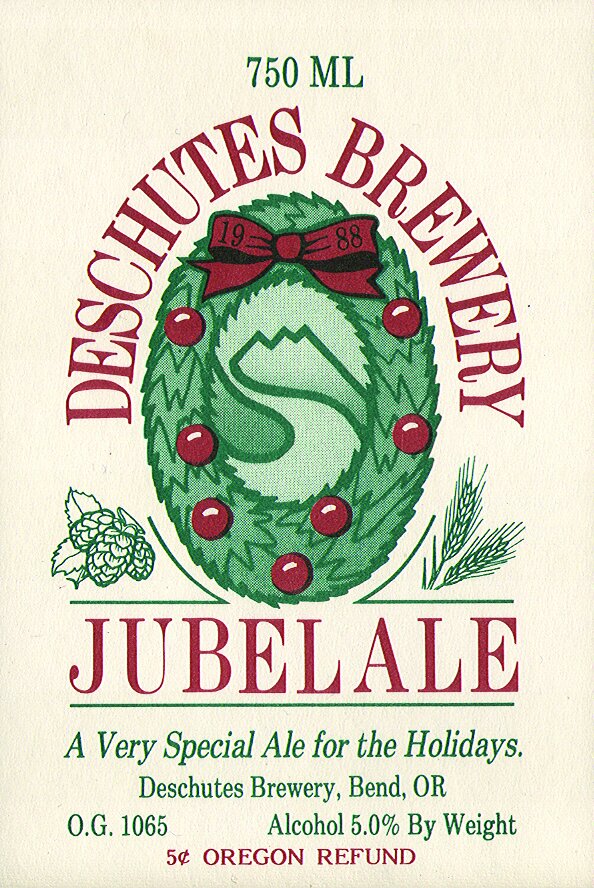

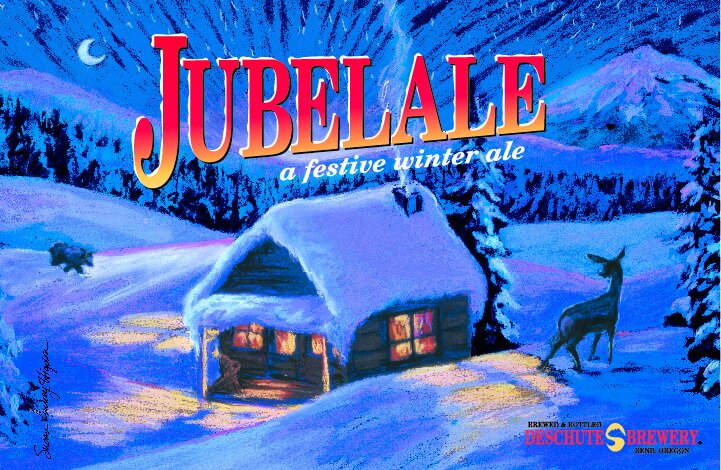
Malt-Driven
Perhaps owing to colder regional temperatures, malt-driven winter ales with their often-higher alcohol content are a tradition popular in the Midwest. Here in Oregon, Jubelale by Deschutes Brewery is among the oldest examples of a seasonal brew. Since its introduction, Jubelale has become a statewide favorite and nationally recognized classic. First introduced in 1987, Jubelale has been brewed using its original recipe, more or less, since its inception — although Deschutes occasionally produces spiced or barrel-aged versions. Like the classic Anchor Christmas Ale, Deschutes chooses a new label from a different local artist for Jubelale’s annual bottling. Legend has it that Jubelale is spiced but, according to the brewery, that’s a myth perhaps perpetuated by Anchor traditionalists who grew up thinking all winter ales are flavored.
Jubelale has never been brewed with anything other than water, malt, yeast and hops. Its root style falling somewhere between an amber ale and a porter, Jubelale sports the nutty/toasty nature of a brown ale and the caramel flavors of crystal malts often found in an amber. Pouring dark brown with ruby highlights, the Jubelale tasting profile is that of dry cocoa, dried fruit and toffee in a malty, nutty medium-bodied beer. At 6 percent ABV, Jubelale was considered strong back when it was new. But with 7 percent ales common these days, Jubelale is straight old school. Something of a throwback, Jubelale is an early rendition of one of the three categories of winter seasonals that I call a strong ale — or the marketing term “winter warmer.”
Today’s local interpretations of the malt-driven winter warmer are usually more amped up than Jubelale with ABVs easily reaching 7 or 8 percent or even higher. A great example of this is Sleigh’r from Eugene’s Ninkasi Brewing. Sleigh’r could be the brewery’s take on a German-style alt bier, only winterized and jacked up for the U.S. palate. Likened to the German equivalent of an amber ale, this exceptionally rich brew features deep caramel-toasted malts. Fermentation with an ale yeast at cooler, lager-like temperatures smoothes out this hybrid beer; it finishes at an untraditionally strong 7.2 percent ABV and bitter 60 IBUs.
Other classic Oregon examples of malt driven beers have gone extinct in favor of the hop driven winter ale, #RIP Pyramid Brewing’s Snowcap, Bridgeport Brewing’s Ebenezer, and Full Sail Brewing’s Wassail, you shall be missed.
Luckily some classic Oregon malt bombs remain, and are worth seeking out:
Golden Valley’s Tannen Bomb is a ruby colored rich and malty ale, full of spicy hop flavors intermingly with specialty grains that will keep you snug and warm all winter long. Terminal Gravity Brewing’s Festivale is a long-running strong winter seasonal with considerable malt sweetness, and aromos of spice and molasses.
Hoppy
Credit Sierra Nevada for breaking the spiced winter seasonal mold with their influential Celebration Ale. Nearly as old as Anchor Christmas Ale, Celebration was introduced in 1981. And like the Anchor version, it inspires beer geeks worldwide to save bottles year after year, comparing vintages over time. Celebration Ale separates itself into possibly the most popular new type of winter seasonal today: the robust hoppy red ale or strong IPA. With America’s 20-year-old hop obsession, it’s no wonder our winter ales have evolved into hop bombs.
The hoppy, IPA category of winter seasonals is generally slightly stronger and maltier than regular releases. Not content to let California dominate the hoppy winter ale category, Oregon brewers now specialize in this hoppy winter seasonal.
Full Sail Brewing in Hood River created one of the state’s first winter IPAs. Entering the Brewmaster Reserve series, Wreck the Halls was a hybrid topping out at 6.5 percent ABV and 68 IBUs. In 2017, former Full Sail Brewmaster Jamie Emmerson called Wreck the Halls “a sublime hybrid of an American-style IPA and a winter warmer.” Before founding Double Mountain Brewery, Matt Swihart created Wreck the Halls when he worked with Full Sail. “I had patterned the beer after my memory of what Sierra Nevada Celebration was like back in the day,” said Swihart. “I thought they softened up that style at some point, so wanted to make a hoppier, stronger version for our Christmas party.” The beer was so well-received that Wreck the Halls later earned status as one of Full Sail’s winter seasonal offerings.
Another Full Sail Brewing alumni, John Harris followed this tradition when he crafted Ecliptic Brewing’s Filament Winter IPA, but after changing it up to a Tangerine version in 2021 they decided to flip the script again. The new Ecliptic 2022 winter seasonal is the 6.5% abv and 60 ibu Ice Giant Cold IPA. Following the trend of lagered West Coast IPA’s, Ice Giant is brewed with pilsner malt and lager yeast, but hopped with the latest popular varieties like Nelson Sauvin, Strata, Pacific Sunrise, and Bru-1. Ice Giant is full of fruity, citrus notes and resinous hop aromas.
This brew plays a bit like an updated winter IPA hybrid by turning up the alcohol content 7.2 percent and the IBUs to a respectable 70. This year Ecliptic freshened it up with tangerine, creating a brighter profile with just a hint of a pithy sharp citrus bite.
You can also follow this trend to Hopworks Urban Brewery’s popular Abominable Winter Ale and Gigantic Brewing’s The Cat Ate My Stash & Pissed On the Xmas Tree. Widmer Brothers Brewing splits the difference with its Brrr Hoppy Red ale. A citrusy, moderately bitter 50 IBU hybrid of Northwest red and IPA, Brrr is a perfect beer for fans who miss the more malty and balanced American IPAs of the early 2000s.
Double Mountain Brewery may be the current torchbearer for the winter IPA, bringing things full circle. Launched in Hood River in 2007, Double Mountain’s aforementioned Matt Swihart needed a new winter seasonal. Rather than go malty or spiced, Matt reached back to his Full Sail days yet again. Fa La La La La Winter Ale is Swihart’s update on Wreck the Halls, itself a take on Sierra Nevada Celebration.
“After I left Full Sail, I felt the beer changed,” said Swihart. “When I started Double Mountain, I made an even hoppier, stronger version than Wreck — it became Fa La La La La.” Fittingly, the first designs for the bottled version of the brew featured a Santa Claus with the likeness of fellow ex-Full Sail Brewmaster John Harris.
Today many breweries are turning to pastry stout and dessert beers that essentially take the dark, malty, strong and spiced beers and roll them up into confectionary beverages that taste more like ice cream floats and frosted cakes in liquid form. But in the pacific northwest, our favorite winter spice is still our own locally grown hops that provide all the piney, fruity, herbal and peppery notes you could want in a winter warmer.


